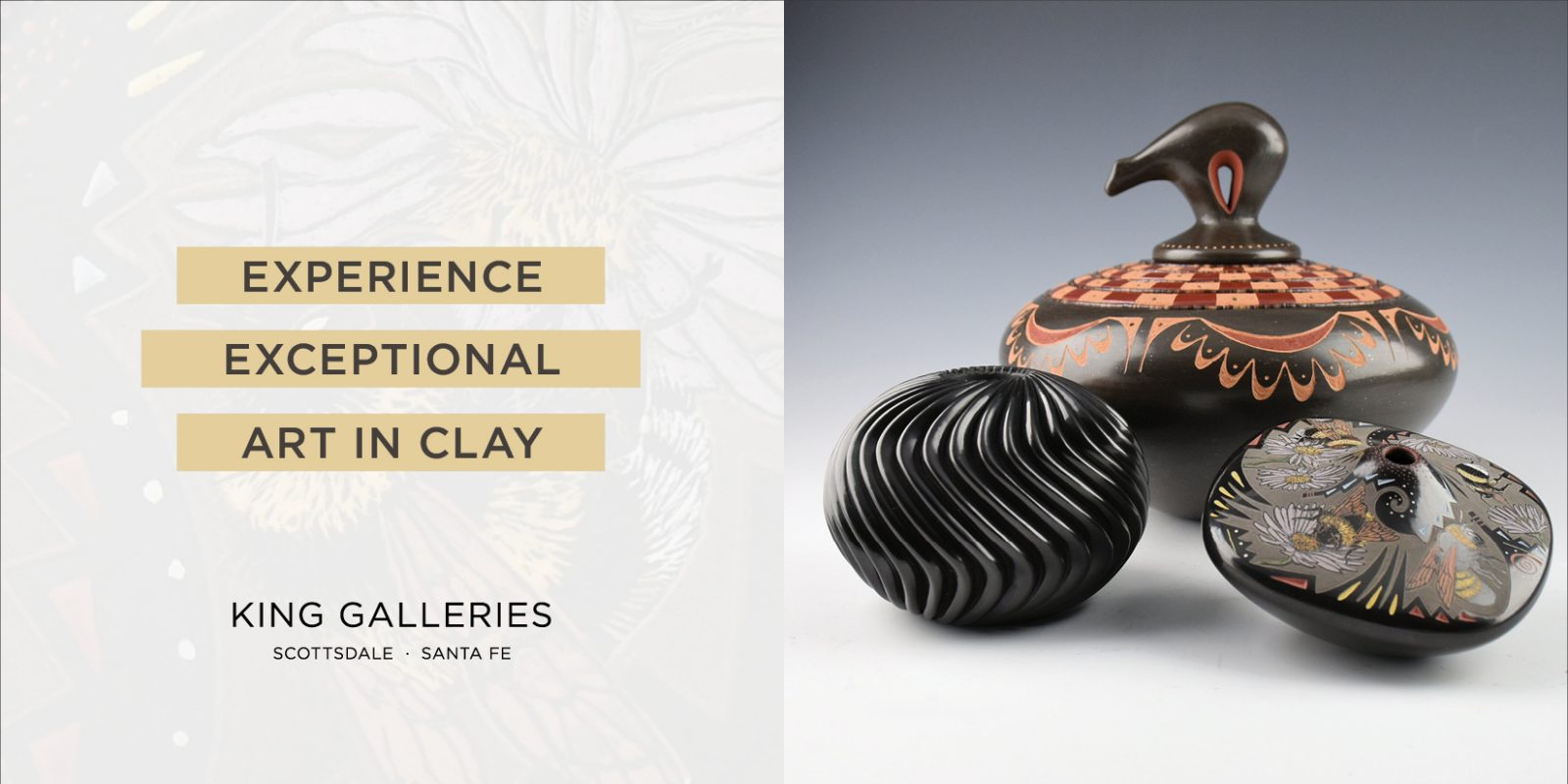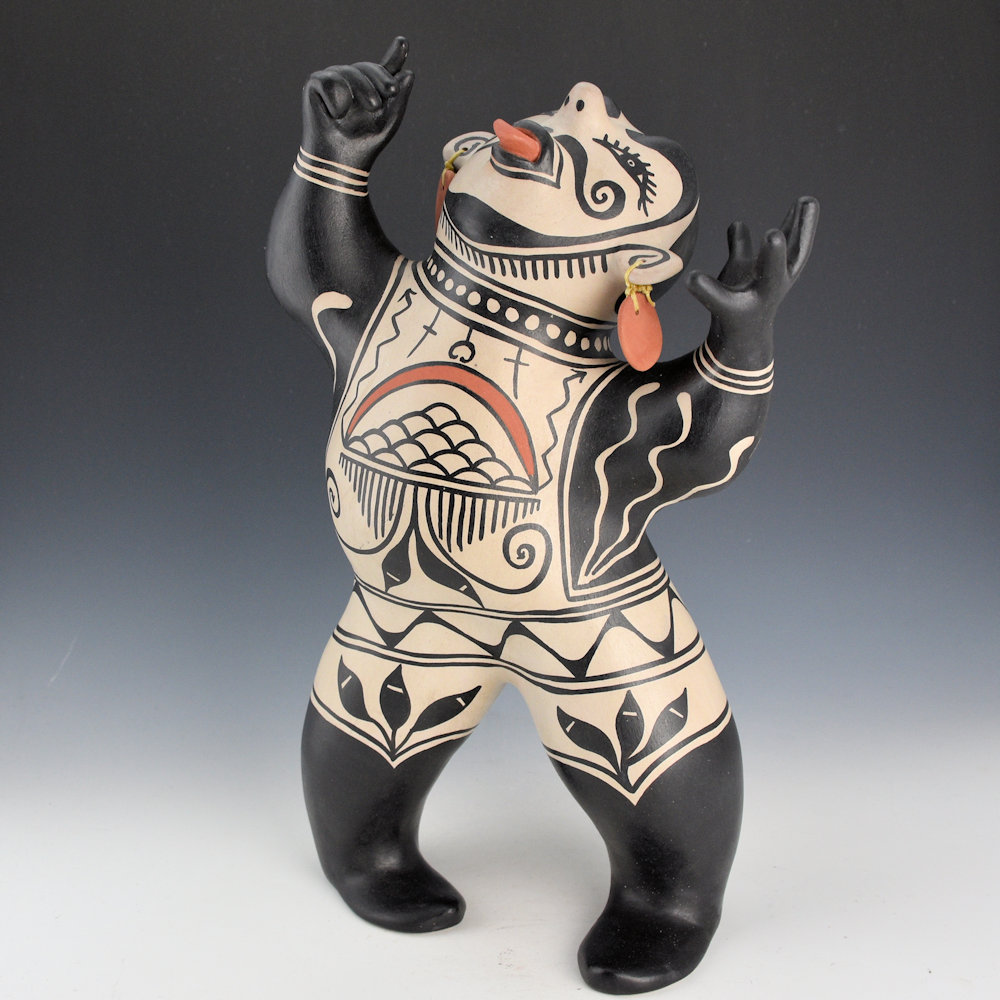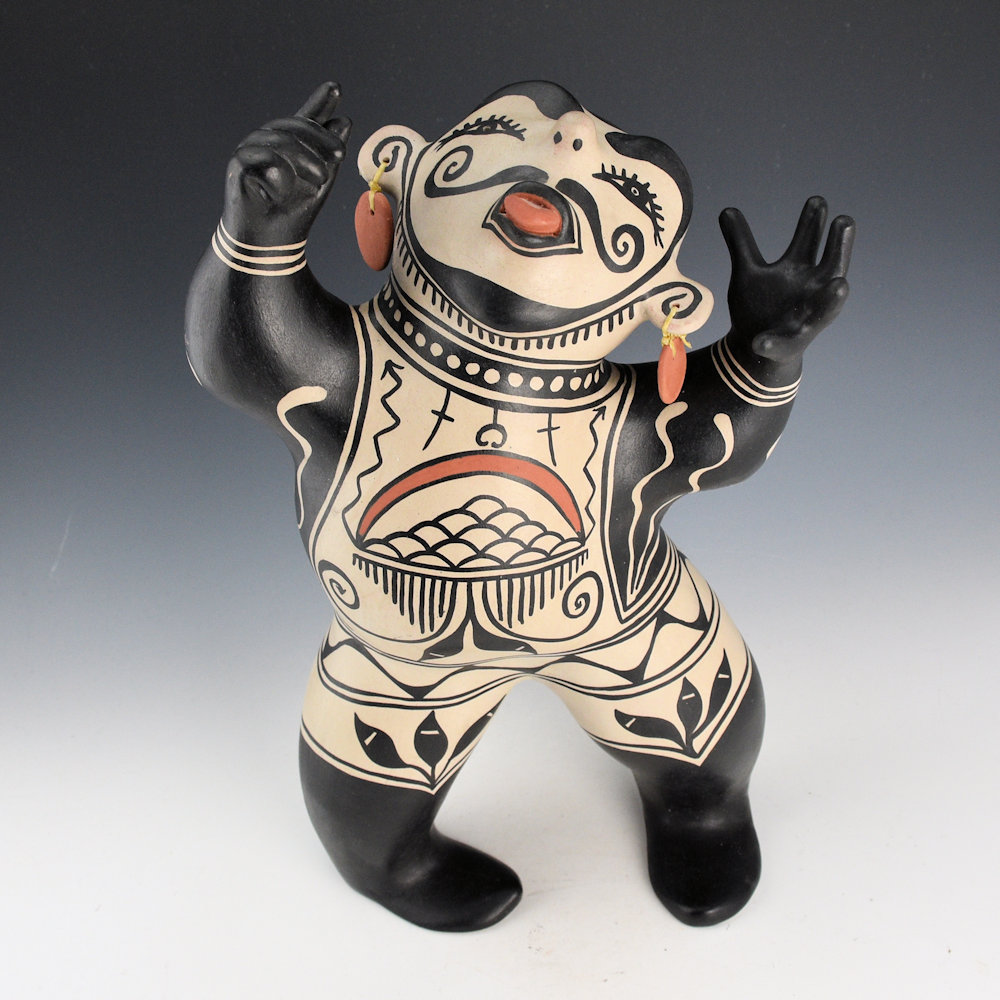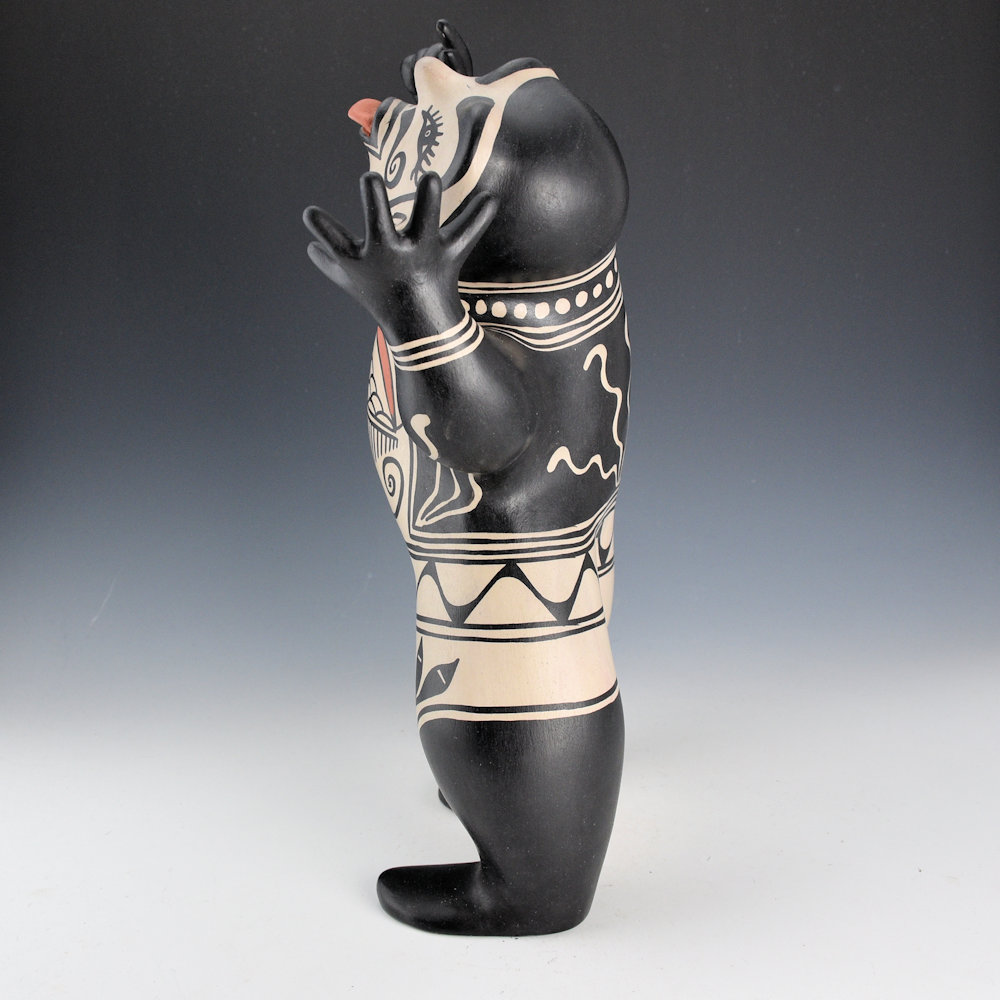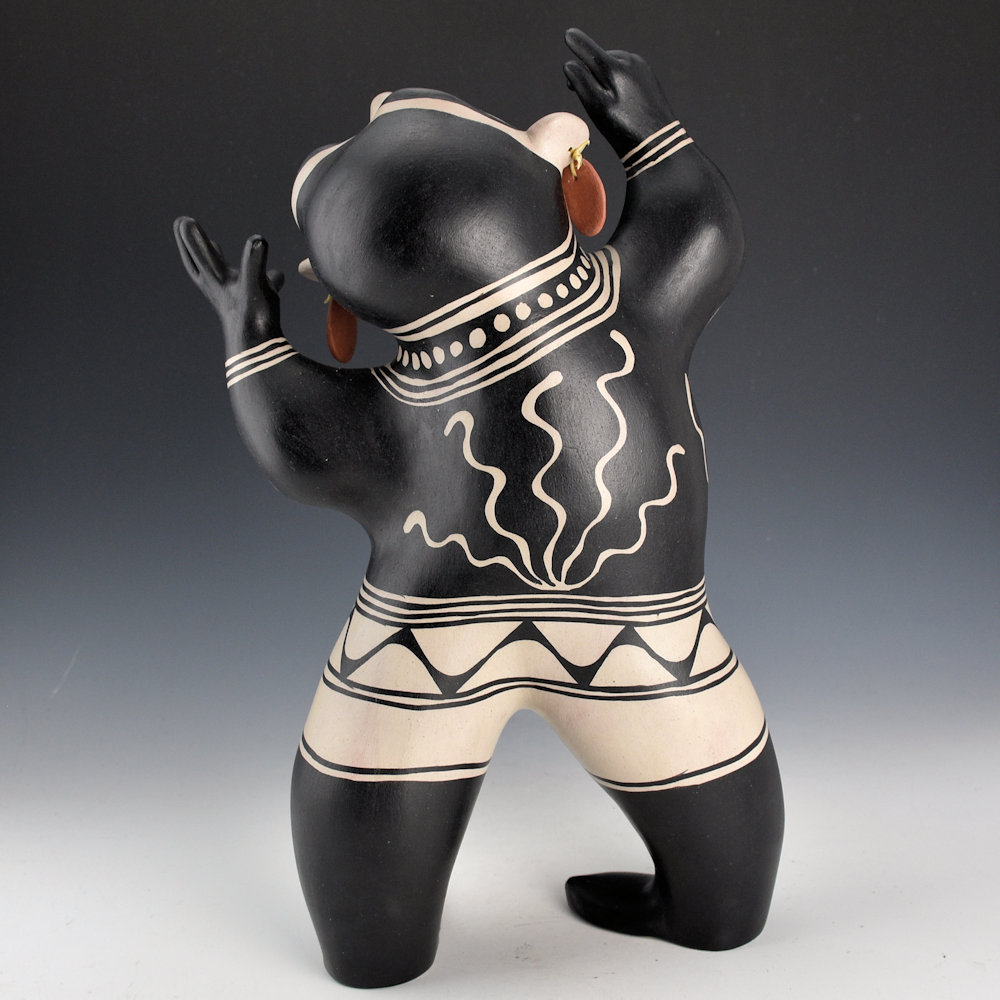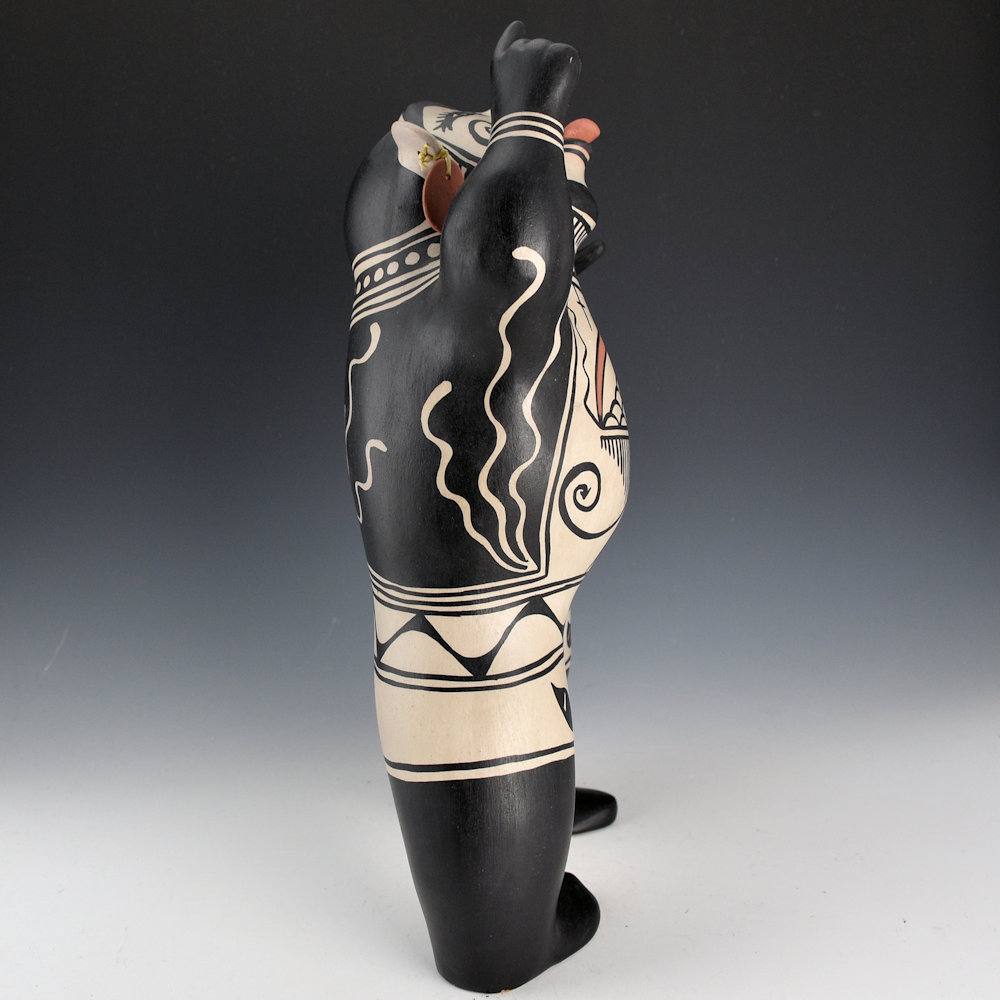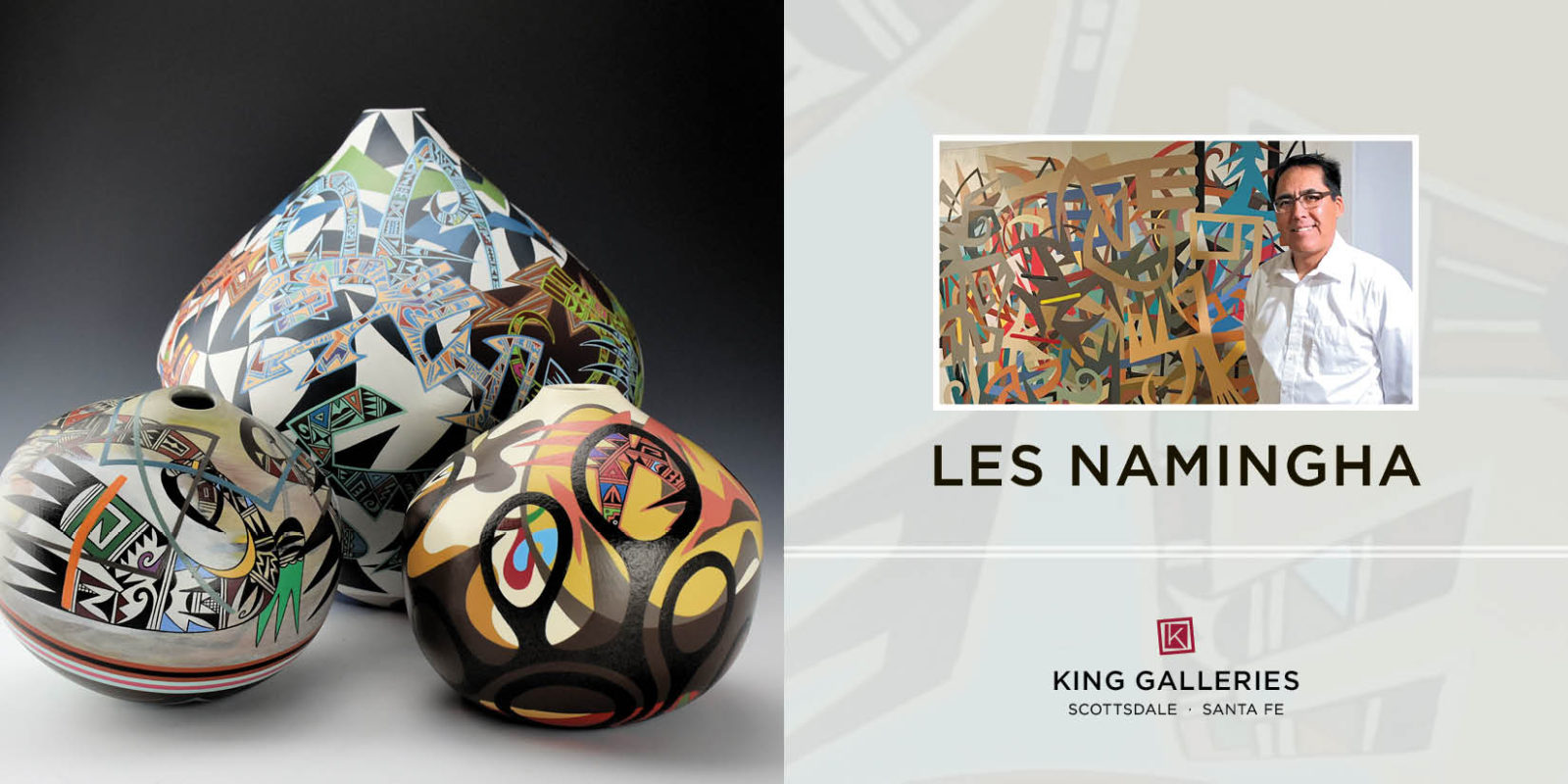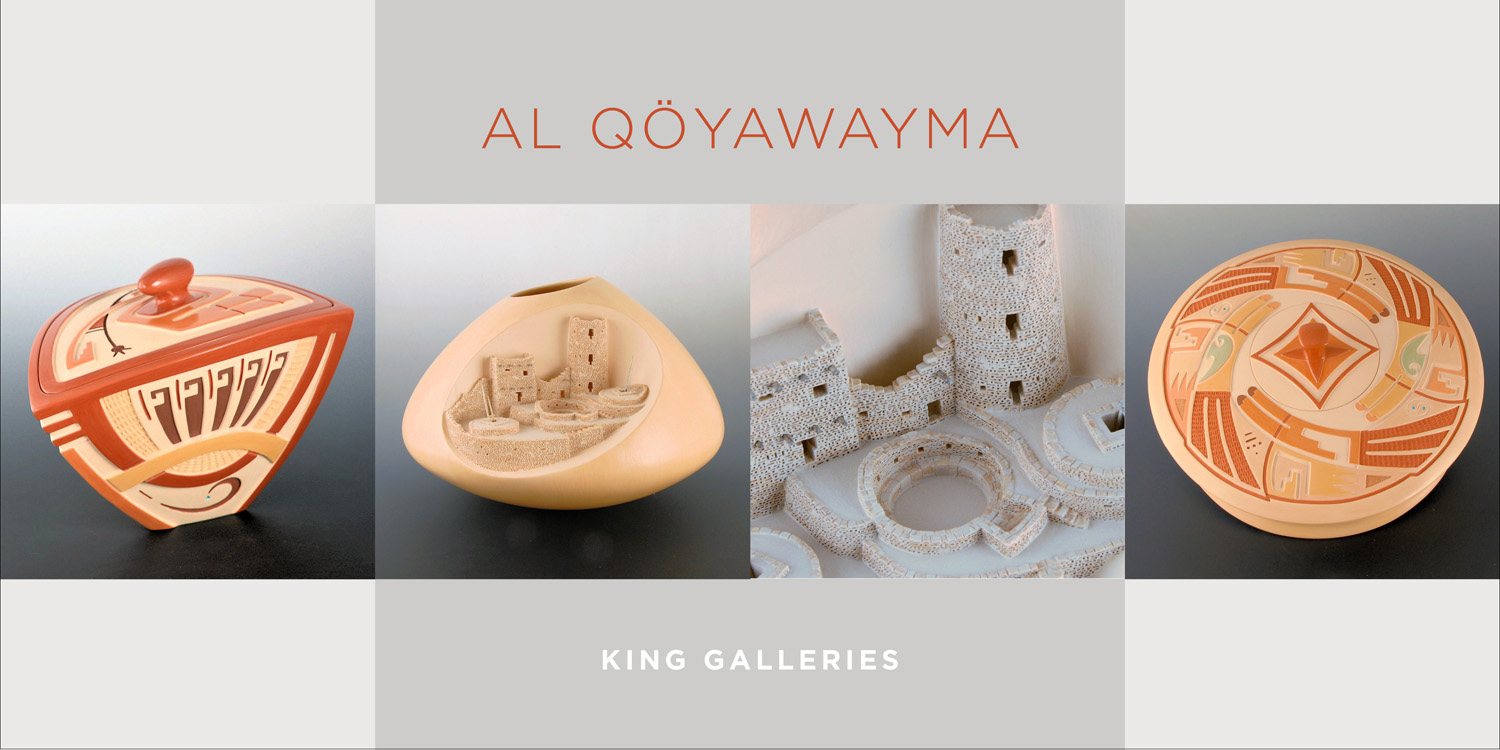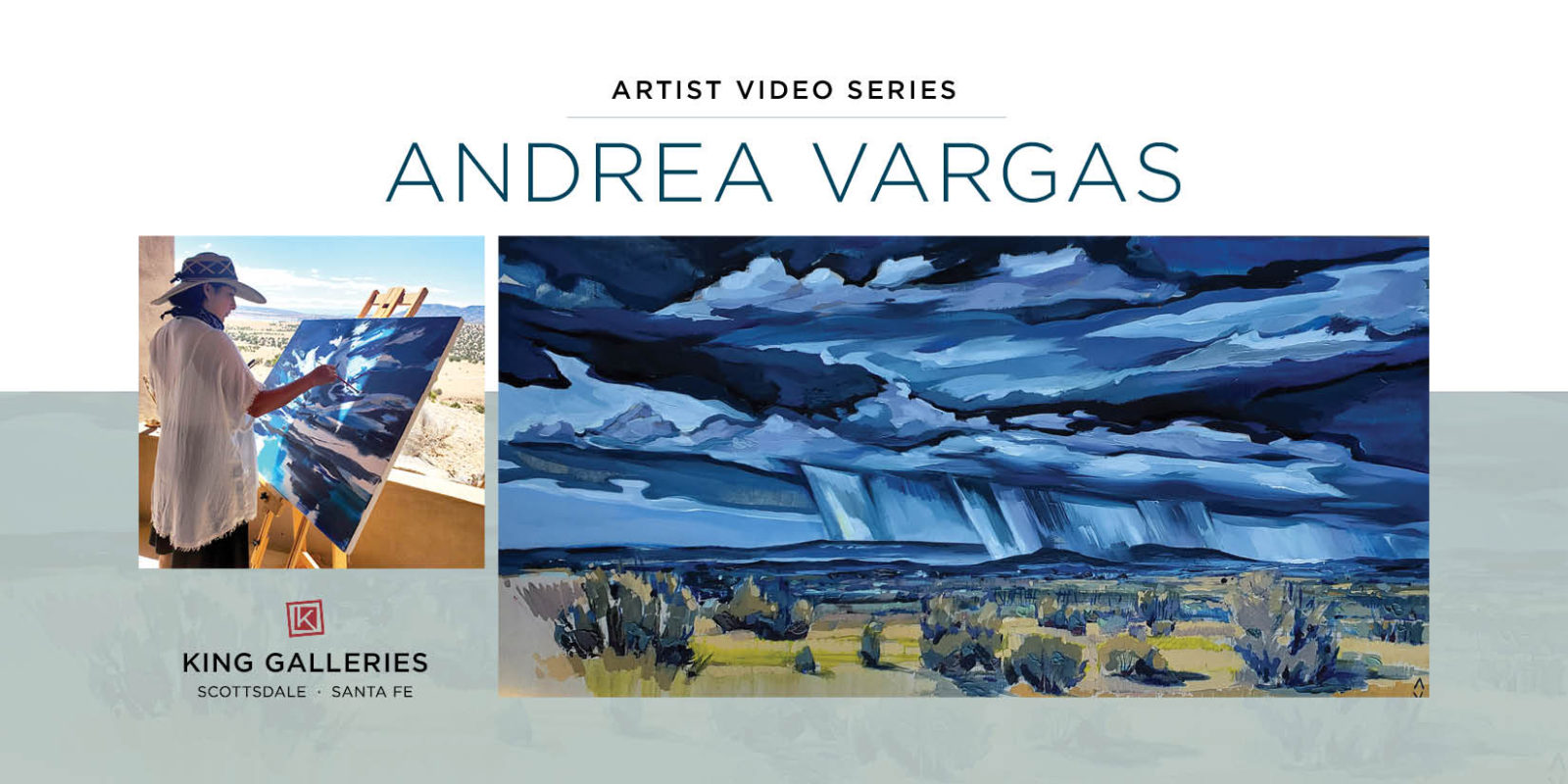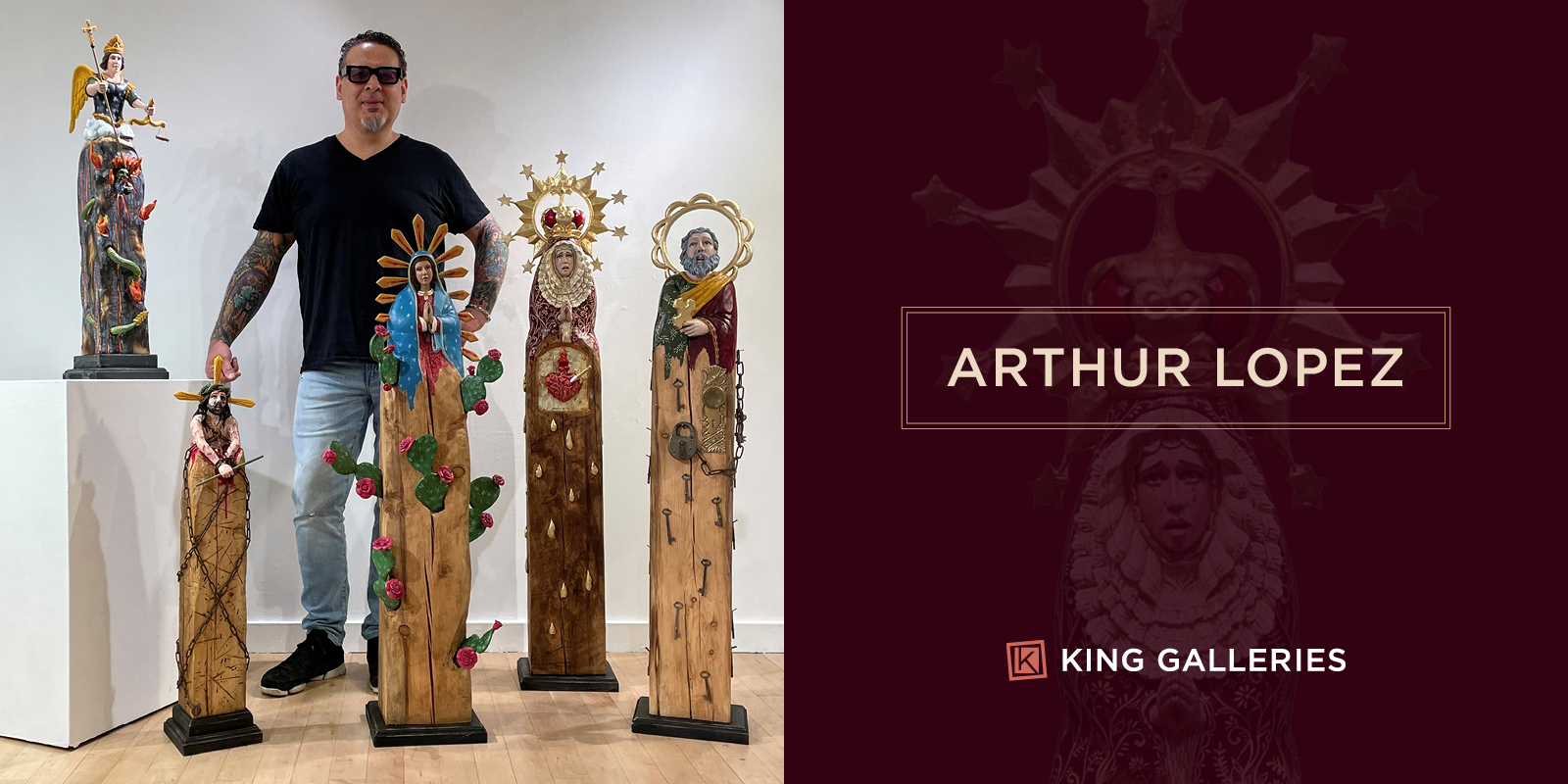Ortiz, Virgil – Traditional Monos Clay Figure (1990s)
$ 8,500.00
Virgil Ortiz is known for his innovative style of Cochiti pottery, inspired by the Monos figures made at the Pueblo in the 1880s. The figure is coil-built, painted with bee-weed, and traditionally fired. The figure has a classic Cochiti raincloud on his chest and plant designs on the legs. His necklace is a sun design. Note the individual fingers on the hands which Virgil always said was more difficult and risky to make. The figure sticks out his tongue, which gives the piece a definite sense of humor! The figure is in excellent condition with no chips, cracks, restoration or repair. It has his cipher on the bottom of the foot.
The Monos figurative art from Cochiti Pueblo has a fascinating story of resilience, resistance, and revival. The historic Monos figures were made in Cochiti from around 1880 to about 1920. Their function was to provide social commentary in a world that was inundated by the new arrival of the railroads and an influx of “foreigners” to the region. “Cochiti potters engaged in social criticism, conducting a discourse, often through parody, on the changing occupants of the Pueblo World. Figures expressed the ways that potters viewed those who differed from themselves, and many are humorous or satirical.
Although the potters were predominantly women, the figures were mostly men and most often Spanish, New Mexican, or Anglo-American in descent and almost certainly depicted local wealthy merchants, cowboys, and priests. As a coping mechanism for the Cochiti potters, the figures were a subtle and subversive form of empowerment. The regional traveling circus or “freak shows” that came into the New Mexico Territory were also a source of inspiration. “Cochiti potters observed all kinds of people with whom they came into contact, and they recorded their impressions of them in clay in a way that communicated amusement, criticism, or simply an active interest in the rapidly changing local scene. Because the figurines were not used by Pueblo insiders but were made for sale to some of the same outsiders they portrayed, potters had to develop a keen understanding of what their targeted audience, the Western other, would understand, appreciate and buy. This use of the figures for social commentary is where they derived their name, Monos, which means “mocking,” “cute,” or “monkey,” possibly as a pejorative relating to their makers.”
Out of stock
